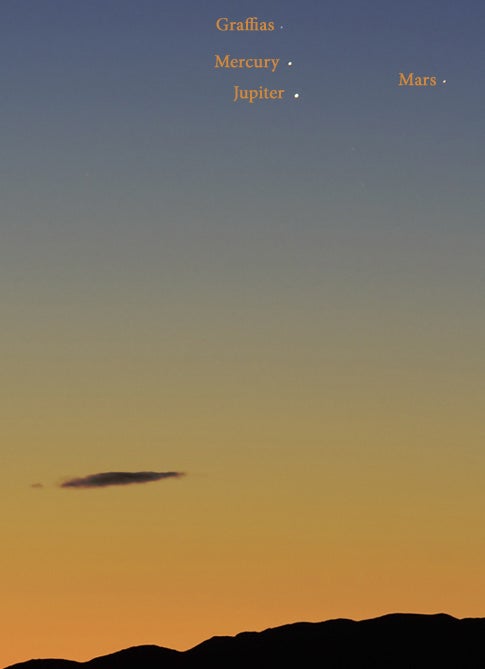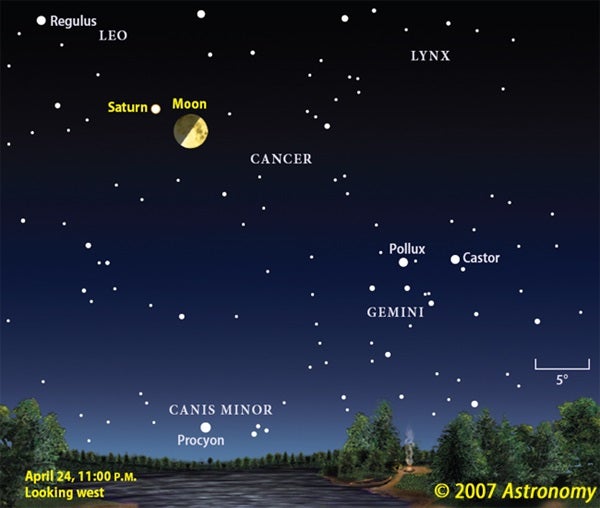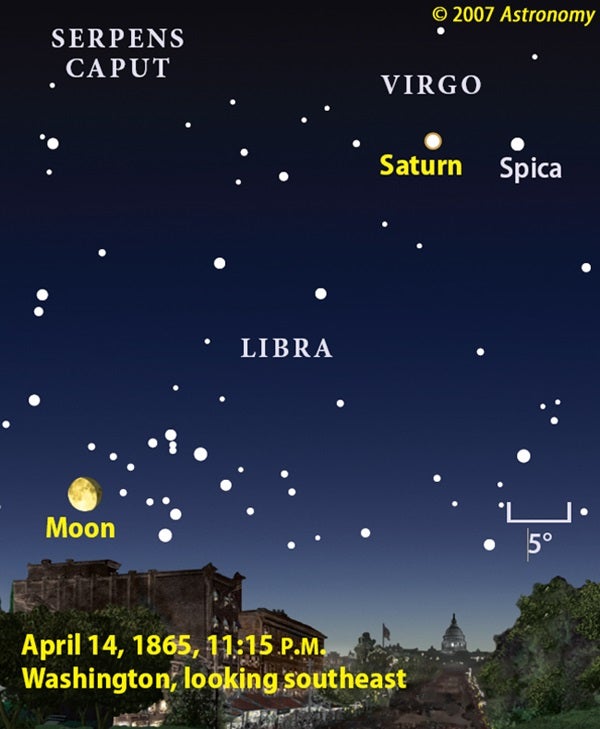The poem is divided into 16 sections — Lincoln was the United States’ 16th president — and these lines from its eighth section recently grabbed my attention:
“As you droop’d from the sky low down as if to my side, (while the other stars all look’d on,) / … As my soul in its trouble dissatisfied sank, as where you sad orb, / Concluded, dropt in the night, and was gone.”
For me, what’s striking about these lines is not their rich symbolism, but their power in transforming the two-dimensional sky into three dimensions: Seeing Earth’s horizon occult Venus pushes our sister planet beyond the blue, and seeing Venus move against the sky thrusts the stars beyond the planet.
Simple observations like these were the foundations of ancient astronomical knowledge. They also led to one of the most famous illusions in astronomical history: the Earth-centered universe — an erroneous scheme of the heavens that placed Mercury closer to Earth than Venus, and the Sun between the orbits of Venus and Mars.
It’s easy to understand why: Motion is one of the principal clues used by our visual sense to fathom distance. If we drive past a fence, it will appear to move faster than the house behind the fence, which will appear to move faster than a hill behind the house, and so on. Experience tells our brains that closer objects move faster. Yet despite our advanced knowledge of the scale and order of things in the sky today, our minds are still naive when it comes to depth perception. Consider when the Moon and planets pass near one another as observed through binoculars.
On December 10, 2006, my friend Amos Meyers and I watched Jupiter, Mercury, and Mars huddle low in the east-southeast at dawn from Volcano, Hawaii. My 10×50 binoculars provided an amazing view of this conjunction. Jupiter and Mercury were only about 1° apart, with Mars another 1/2° farther away. What struck us, however, was the illusion that Jupiter appeared closer to us than Mercury — a reminder that perception is not reality.
But our 3-D journey was not over. That morning, Saturn was high overhead, about 1° south of a waning gibbous Moon. Again, through binoculars, Saturn looked unmistakably closer than our satellite. This observation flies in the face of reason. The Moon not only is much larger and brighter than the ringed planet, but it also shows greater detail. Based on visual experience, the Moon should have looked like it was closer in the mind’s eye. And although I could visually push Saturn behind the Moon, it required a Herculean mental effort. Why?
Once home, something dawned on me. In both observations, the object that appeared closest was to the right in the visual field. From our viewing perspective, Saturn was to the right of the Moon, and Jupiter was to the right of Mercury. Perhaps, when we use binoculars to look at two close celestial objects, the dominant eye determines which object appears closest. My dominant eye is my right one. (To find your dominant eye, select an object 20 feet [6 meters] away, close one eye, and point to it; the open eye is dominant.)
To test this theory, I went out December 12 and looked at Jupiter and Mercury again through binoculars. At first, Jupiter appeared closer than Mercury. But when I twisted my body so that the solar system’s innermost planet appeared to the right of Jupiter, Mercury looked closer.
Did I bias myself? I think not. But who knows the power of the mind?
On the night of April 24/25, the waxing gibbous Moon will skim past Saturn for observers living in the continental United States. If it’s clear, watch their close approach through 10×50 binoculars. Can you perceive the illusion of depth? Does your dominant eye play a role in what you see? Does depth perception vary with angular separation? Meyers wonders what would happen if you turn your body so that Saturn appears above or below the Moon. Be sure to send detailed reports to me at someara@interpac.net.
By the way, when John Wilkes Booth shot President Lincoln in Ford’s Theatre April 14, 1865, a waning gibbous Moon was rising about 40° east of Saturn. The Moon had sailed within 5° of the ringed planet only 3 days before. If you go outside after sunset any day during this month, you’ll see Venus burning prominently in the west, just as it did 142 years ago when Whitman watched it with solemn eyes. This month, though, Venus still marches to the east — a fitting symbol for the spiritual rise of Lincoln after his death.













